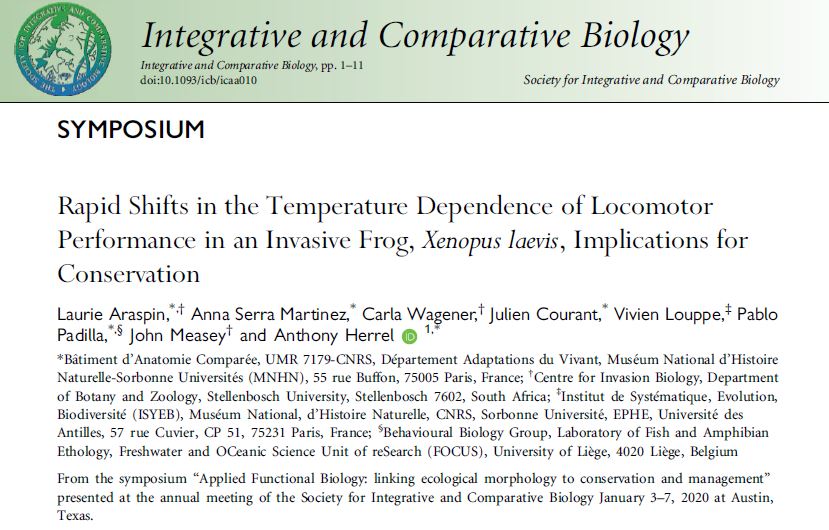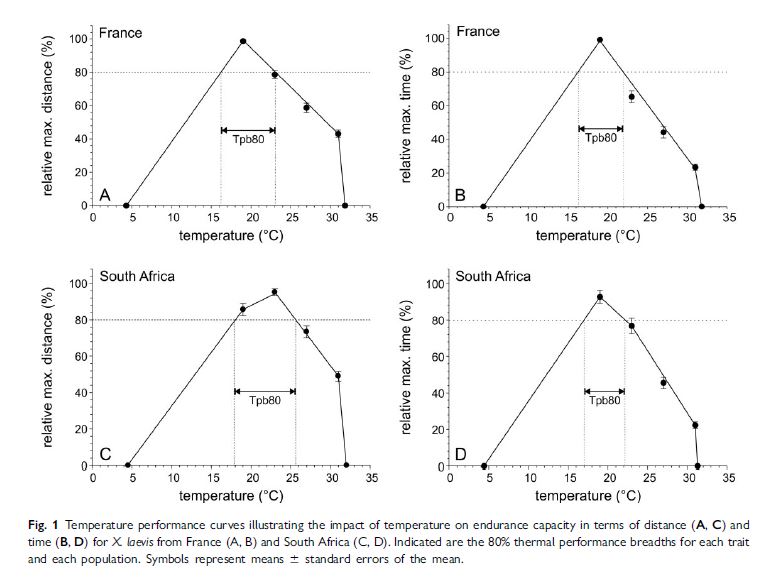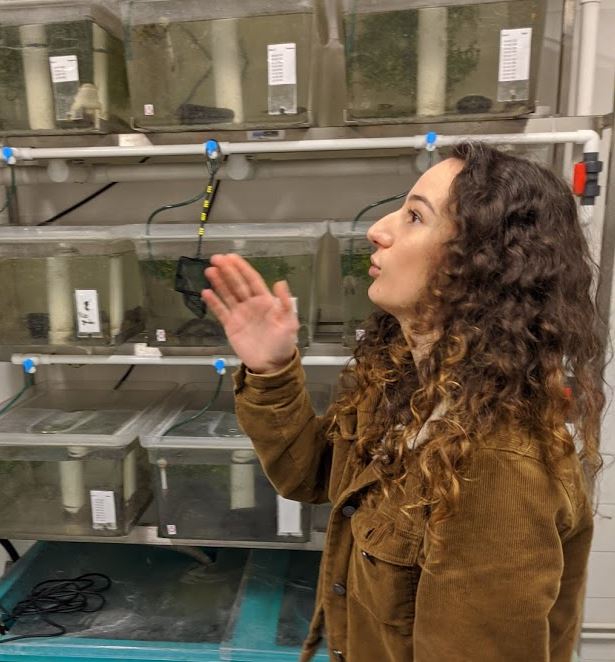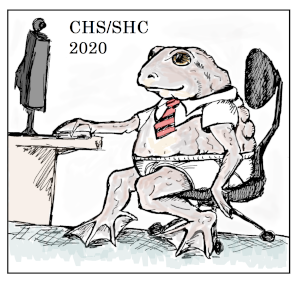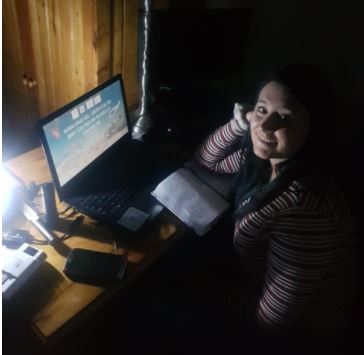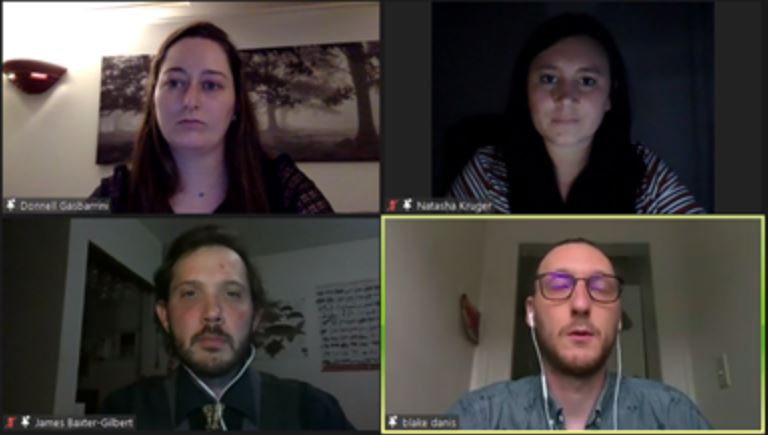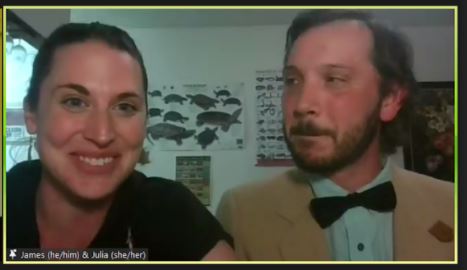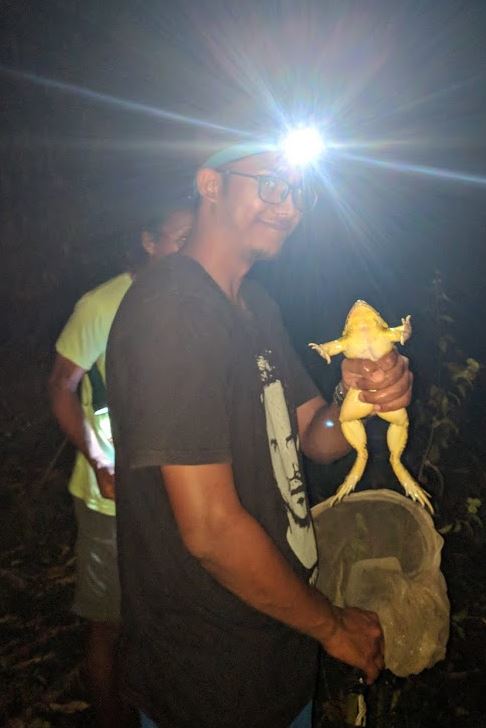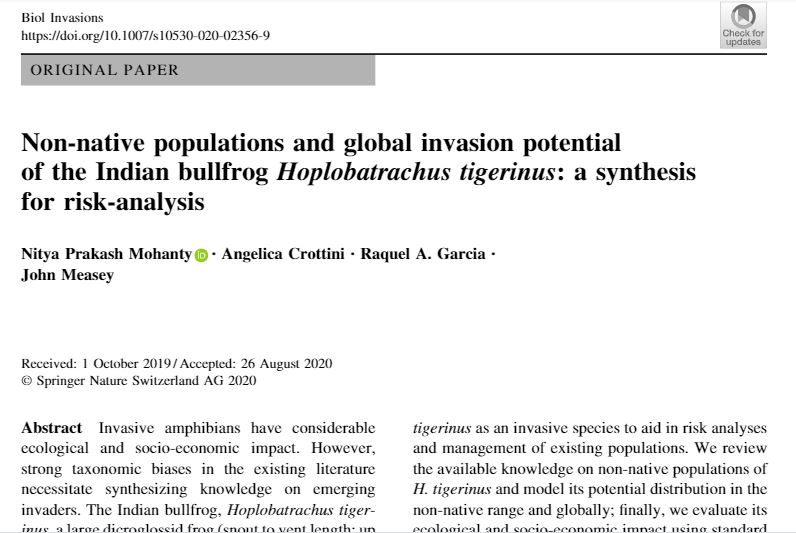South African Post Office issues first day cover to commemorate Critically Endangered frogs
The South African Post Office has issued four stamps on a First Day Cover showing South Africa's endangered frogs and toads. These are all frogs from the south-western Cape that are notably linked to research from the MeaseyLab:
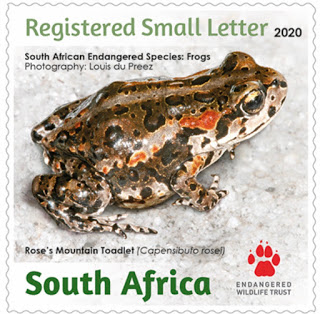
Rose's mountain toadlet is the subject of a growing number of publications:
Tolley, K.A., De Villiers, A.L., Cherry, M.I., & Measey, G.J. 2010. Isolation and high genetic diversity in dwarf mountain toads (Capensibufo) from South Africa. Biological Journal of the Linnean Society 100, 822-834. https://doi.org/10.1111/j.1095-8312.2010.01469.x pdf
Cressey, E.R., Measey, G.J., & Tolley, K.A. (2015). Fading out of view: the enigmatic decline of Rose’s mountain toad Capensibufo rosei. Oryx, 49, 521–528. https://doi.org/10.1017/S0030605313001051 pdf
Edwards, S, Tolley, KA & Measey, GJ (2017) Habitat characteristics influence the breeding of Rose's dwarf mountain toadlet Capensibufo rosei (Anura: Bufonidae) Herpetological Journal27: 287-298. pdf
Channing, A., Measey, G.J., De Villiers, A.L., Turner, A.A. & Tolley, K.A. (2017) Taxonomy of the Capensibufo rosei group (Anura: Bufonidae) from South Africa. Zootaxa 4232(2): 282–292 https://doi.org/10.11646/zootaxa.4232.2.11 pdf
Becker, FA, Tolley, KA, Measey, GJ & Altwegg, RA (2018) Extreme climate-induced life-history plasticity in an amphibian. American Naturalist 191(2): 250–258. http://dx.doi.org/10.1086/695315 pdf
Measey, J., Becker, F. & Tolley, K.A. (2021) After the fire: assessing the microhabitat of Capensibufo rosei (Hewitt, 1926). Herpetology Notes14: 169-175. pdf
Becker, F., Altwegg, R., Slingsby, J., Measey, J., Tolley, K.A. (in press) Finding rare species and estimating the probability that all occupied sites have been found. Ecological Applications
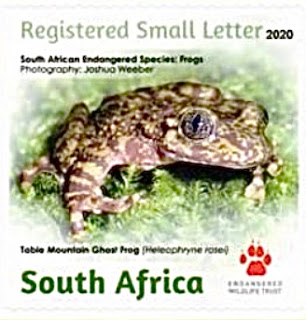
Ebrahim, Z., De Villiers, A., Measey, J., (2020) Assessing water conditions for Heleophryne rosei tadpoles and the conservation relevance. Koedoe62(1), a1581. https://doi.org/10.4102/koedoe.v62i1.1581 pdf

Stark, D., Turner, A., van Rensburg, B.J. & Measey, J. (in press) Population estimation of a cryptic moss frog using acoustic spatially explicit capture recapture. Pages xx–xx in S.C. Walls and K.M. O’Donnell, editors. Strategies for Conservation Success in Herpetology. Society for the Study of Amphibians and Reptiles, University Heights, OH, USA.

Once we've published work on this species, we'll have the complete set!
